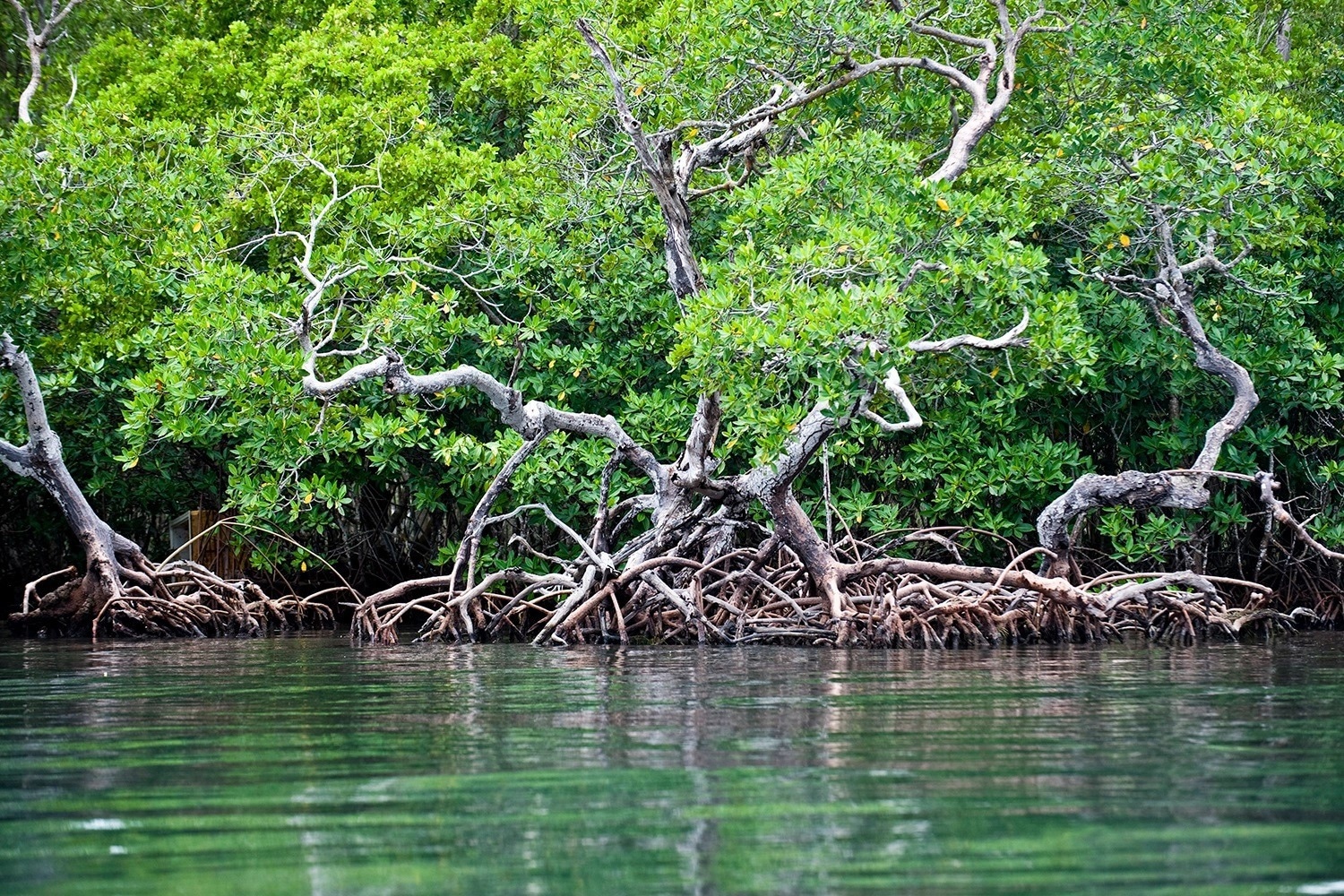The importance of mangrove forests in Belize for carbon sequestration, tourism, fisheries, and coastal protection is quantified using a novel technique, and the values are then used to focus on conservation and restoration. The observations have implications for coastal countries seeking to reconcile climate goals with economic development.

Mangrove trees along the coast of Belize. Image Credit: Antonio Busiello/WWF
A small Central American nation is laying out a plan to mitigate climate change while enhancing its economy and improving public safety.
A recent study from Stanford assesses the worth of Belize’s coastal mangrove trees in terms of the amount of carbon they can store, the value they can provide to tourism and fisheries, and the security they can offer against hazards like coastal storms.
Importantly, Belize has already committed to protecting or restoring more mangrove forests comprising an area roughly the size of Washington, D.C., by 2030 based on the results, which were published on June 1st, 2023, in Nature Ecology and Evolution. Numerous other coastal nations can learn from this strategy.
The US has one of the largest coastlines in the world and extensive wetlands. This paper offers an approach we could use for setting evidence-based climate resilience and economic development goals.
Katie Arkema, Study Senior Author and Senior Fellow, Natural Capital Project, Stanford University
Meeting their international commitments to climate change has been difficult for many nations. Mangroves, seagrasses, and salt marshes may lock up or sequester carbon, which is a promising natural solution that aids in both reducing greenhouse gas emissions and climate change adaptation.
However, the United States and other significant coastal countries have generally ignored these blue carbon policies.
The oversight is partly caused by the difficulty of determining how much carbon wetlands and other coastal ecosystems can store, as well as where to use these measures to optimize side effects on the economy, decrease flood risk, and other areas.
Maximizing Benefits
The researchers used land cover data from Belize and field estimations from Mexico to quantify carbon storage and sequestration in collaboration with other scientists, politicians, and stakeholders from Belize.
Modeling associated services, such as lobster breeding grounds, offered by mangroves today and under potential preservation and restoration scenarios at various places allowed them to quantify the decreased coastal flood risk, tourism, and fisheries co-benefits.
They discovered, for example, that in some places, modest mangrove restoration efforts could have significant positive effects on fisheries and tourism. In contrast, because it takes time for carbon stores to build up in the soil and biomass, total organic carbon sequestration is initially lower when mangrove regions are restored than when existing forests are protected.
Another important finding is that when the mangrove area grows, the rate of growth for advantages other than carbon storage starts to slow down. Stakeholders and policymakers can determine how to best combine environmental conservation with coastal development by foreseeing these inflection points.
Similarly, pinpointing the areas where blue carbon policies will generate co-benefits most effectively might assist in building local support.
Based on the research, policymakers in Belize pledged to conserve 96 square miles of national mangroves, or an extra 46 square miles of current mangroves, and restore 15 square miles of mangroves by 2030.
According to the researchers’ models, if successful, the effort will not only store and sequester millions of tons of carbon but will also increase lobster fisheries by up to 66%, produce mangrove tourism worth several million dollars annually, and lower the risk of coastal hazards for at least 30% more people.
The figures are noteworthy for a country with a smaller population than Tulsa, Oklahoma, and a GDP that is about equal to 2% of New York City’s yearly budget.
The strategy opens up new avenues for financing nature-based solutions in nations like Belize since it addresses both climate change and sustainable development goals.
The Natural Capital Project, the InterAmerican Development Bank, and the Asian Development Bank will collaborate with ten countries, including Belize, in the upcoming months to promote the mainstreaming and accounting for such natural methods in policy and investment decision-making processes.
Belize’s example, illustrating the practical ways nature’s many benefits can be spatially quantified and inform a country’s climate policy and investments, are now primed to be scaled around the world with development banks and country leader.
Mary Ruckelshaus, Study Co-Author and Executive Director, Natural Capital Project, Stanford University
The World Wildlife Fund, the Pew Charitable Trusts, and the Gordon and Betty Moore Foundation provided funding for the study.
Co-authors of the study include researchers from Silvestrum Climate Associates, the World Wildlife Fund, the Pew Charitable Trusts, the University of Minnesota, Belize’s National Climate Change Office, and Belize’s Coastal Zone Management Authority and Institute in addition to Jade Delevaux of the Natural Capital Project, Jessica Silver, and Samantha Winder of the Natural Capital Project and the University of Washington.
Journal Reference
Arkema, K. K., et al. (2023) Evidence-based target setting informs blue carbon strategies for nationally determined contributions. Nature Ecology and Evolution. doi:10.1038/s41559-023-02081-1.